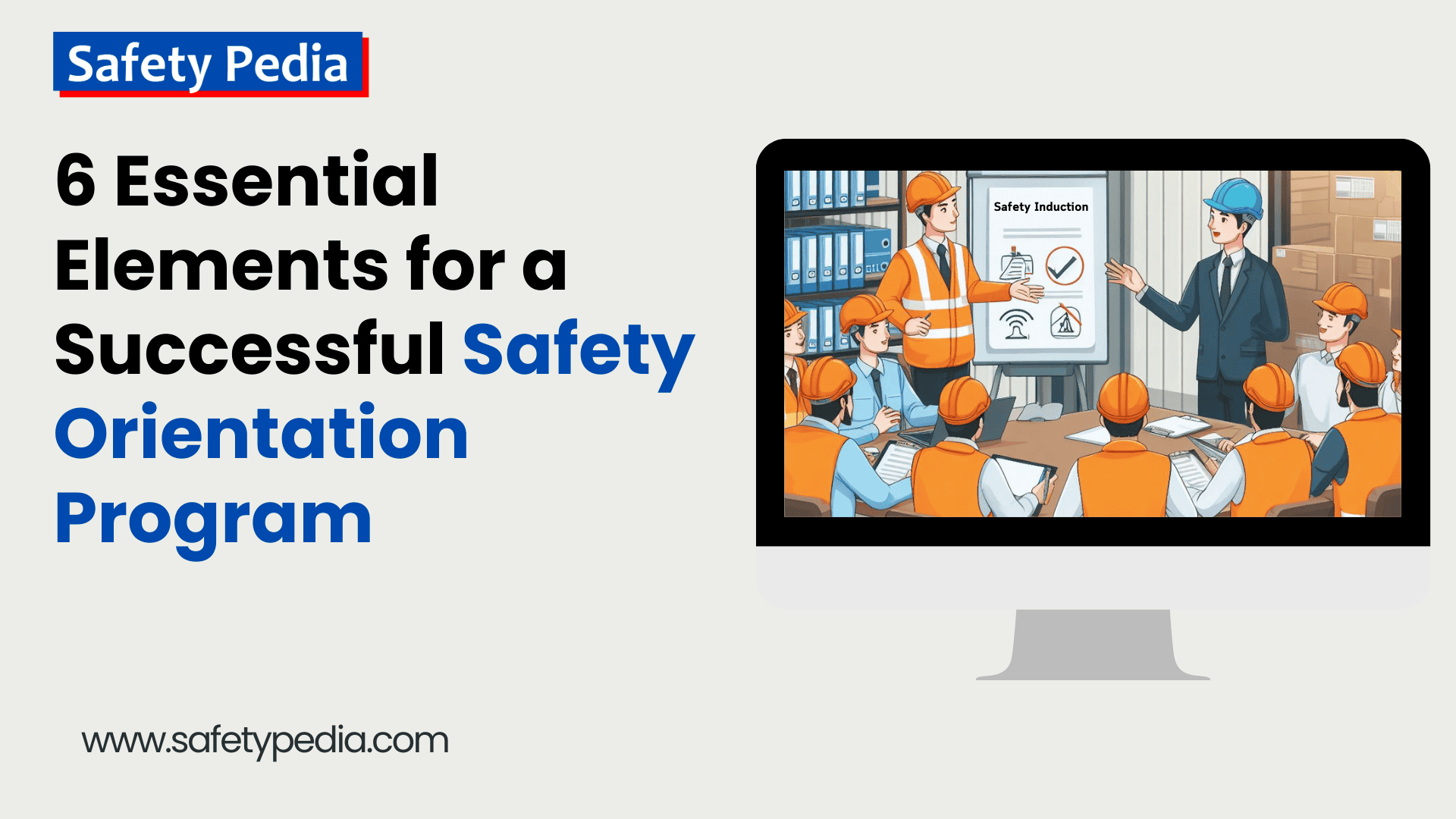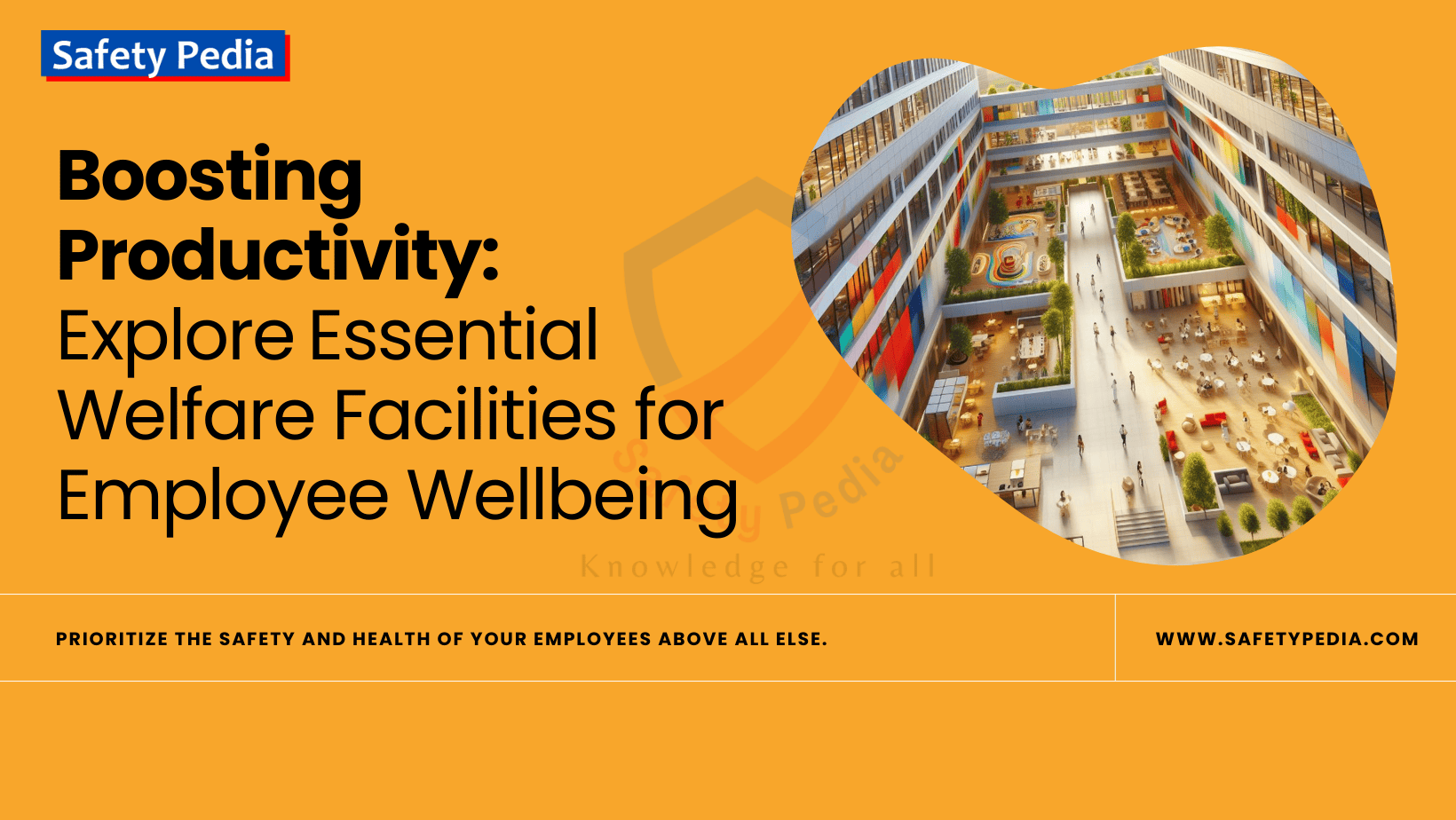World Day for Safety and Health at Work Theme 2024
The theme of World Day for Safety and Health at Work in 2024 is “Impacts of Climate Change on Occupational Safety and Health.”
Mark your calendars! Every year on April 28th, the International Labour Organization (ILO) recognizes the World Day for Safety and Health at Work. This year’s theme tackles a critical issue: the impacts of climate change on occupational safety and health. From extreme weather events to rising temperatures and worsening air quality, climate change poses significant risks to workers around the globe. Stay tuned for more information on how you can contribute to a safer and healthier work environment in the face of a changing climate.
Ensuring Safe and Healthy Work Now in a Changing Climate
World Safety Day, also known as the World Day for Safety and Health at Work, is an annual international event observed on April 28th. It is organized by the International Labour Organization (ILO), a United Nations agency, to promote and raise awareness about the importance of preventing occupational accidents and diseases. The day aims to encourage governments, employers, employees, and stakeholders to collaborate and take action to reduce workplace accidents, injuries, and occupational diseases. The theme of World Day for Safety and Health at Work in 2024 is “Impacts of Climate Change on Occupational Safety and Health.”
Each year, the ILO sets a specific theme for World Safety Day to focus on workplace safety and health aspects. The event involves various activities, such as seminars, workshops, conferences, and awareness campaigns, to educate people on the importance of workplace safety and the best practices to ensure a safe and healthy work environment for all. Last year the theme was “A Safe and Healthy Working Environment A Fundamental Right” ¹.
The theme for 2024 is “Impacts of Climate Change on Occupational Safety and Health.” Climate change disrupts weather patterns, posing significant risks to worker safety and health globally. These risks include:
- Heat stress: Rising temperatures can lead to heat exhaustion and stroke, particularly for outdoor workers.
- Increased UV radiation: Stronger sunlight exposure increases the risk of skin cancer and eye damage for outdoor workers.
- Worsened air pollution: Climate change can exacerbate existing air pollution or create new sources, leading to respiratory problems for workers.
- Extreme weather events: Floods, hurricanes, and other severe weather events can cause workplace accidents and injuries.
- Industrial accidents: Climate change may increase the risk of major industrial accidents due to extreme weather events or infrastructure damage.
- Vector-borne diseases: Rising temperatures and changing weather patterns can create favorable conditions for mosquitoes and other insects, leading to an increase in diseases like malaria and dengue fever.
- Agro-Chemical exposure: Climate change disrupts weather patterns, making pesticides less effective and potentially harming beneficial insects.
How Climate Change is Impacting Occupational Health and Safety?
The theme chosen by ILO is of great importance. Climate change isn’t an ordinary problem; it’s a complex, global issue with far-reaching consequences.
Climate change isn’t just harming our planet and our own well-being, it’s also making work more dangerous. Workers are often on the front lines of these changes, experiencing them for longer and more intensely than most. This is because their jobs might put them outside in extreme weather, expose them to worsening air quality, or require them to work with hazardous materials that climate change might disrupt.
As a result, climate change can make workplaces more hazardous, leading to a higher risk of injuries, illnesses, and even death. The dangers can range from physical injuries due to extreme weather events to serious health problems like cancer, heart disease, breathing difficulties, eye damage, and even mental health issues.
From heat stress to vector-borne diseases, climate change creates new hazards and intensifies existing ones. Let’s work together to raise awareness and implement solutions to protect workers in our evolving world.
Climate Change and Mental Health
Climate change isn’t just a threat to our environment and physical health; it’s also having a significant impact on our mental wellbeing. Here’s a breakdown of the key connections:
- Increased Stress and Anxiety: Witnessing extreme weather events, rising sea levels, and the destruction of ecosystems can be incredibly stressful and anxiety-inducing.
- Loss and Displacement: Climate change can lead to loss of homes, livelihoods, and even loved ones due to disasters or forced migration. This can trigger grief, depression, and post-traumatic stress disorder (PTSD).
- Eco-Anxiety and Ecological Grief: These terms describe the chronic worry and emotional distress associated with climate change. People may experience a sense of loss for the environment they cherish and fear for the future of the planet.
- Uncertainty and Fear: The unpredictable nature of climate change and the looming threat of future disasters can create a constant sense of fear and uncertainty, impacting mental well-being.
- Heat and Air Quality: Rising temperatures and worsening air pollution can directly affect mood and cognitive function, sleep disturbance, increasing irritability and depression.
Vulnerable Groups:
- Children and Young People: They are often more sensitive to environmental changes and may struggle to cope with the emotional weight of climate change.
- People Living in High-Risk Areas: Those living in areas prone to extreme weather events or rising sea levels face heightened stress and anxiety.
- Livelihood Dependence on the Environment: Individuals whose livelihoods depend on the environment, such as farmers and fishermen, are at greater risk of experiencing mental health challenges due to climate-induced disruptions.
What Can Be Done?
- Individual Actions: Practicing mindfulness, connecting with nature, and taking steps to reduce our carbon footprint can help manage climate anxiety and promote a sense of agency.
- Community Support: Building community resilience through support networks and mental health services can be crucial for those facing climate-related challenges.
- Policy and Advocacy: Supporting policies that address climate change mitigation and adaptation is essential for protecting mental well-being at a larger scale.
Climate change is a complex issue with multifaceted consequences. Addressing mental health concerns in the face of a changing climate requires a multi-pronged approach, focusing on individual coping mechanisms, community support systems, and effective climate policies. By acknowledging the link between climate change and mental health, we can work towards a more sustainable and mentally healthy future for all.
How To Protect workers in a changing climate?
Climate change presents a growing challenge to worker safety and health. From extreme weather events to rising temperatures and worsening air quality, the effects are already being felt around the globe. Here are some strategies to protect workers in this evolving landscape:
- Improve workplace infrastructure: Invest in measures to protect workers from extreme temperatures. This could involve installing air conditioning units, providing shade structures for outdoor workers, and using heat-reflective clothing.
- Develop flexible work schedules: Consider adjusting work schedules during peak heat hours or during bad weather events to minimize worker exposure to harsh conditions.
- Implement emergency preparedness plans: Develop comprehensive plans for responding to extreme weather events, including evacuation procedures, communication protocols, and emergency supplies.
- Track and monitor worker health: Develop systems to track heat-related illnesses, respiratory problems, and other health issues potentially linked to climate change.
- Mental Health Support: Recognize the potential mental health impacts of climate change on workers, particularly those experiencing job insecurity or displacement due to extreme weather events. Provide access to mental health resources and support services to help workers cope with stress, anxiety, or trauma.
- Strengthen workplace safety regulations: Governments and safety organizations should update regulations to address new and emerging climate-related risks.
- Regular inspections and enforcement: Conduct regular workplace inspections to ensure proper implementation of safety protocols and provide resources for continuous improvement.
- Utilize heat stress monitoring tools: Implement wearable devices or environmental monitors to track temperature and alert workers of potential heat stress risks.
- Develop early warning systems: Utilize advanced weather forecasting and warning systems to provide timely alerts about extreme weather events.
- Remote work options: Consider offering remote work options for tasks that can be completed outside the workplace, particularly during high-risk periods.
- Invest in personal protective equipment (PPE): Provide appropriate PPE for workers exposed to increased air pollution, UV radiation, or other climate-related hazards.
- Promote knowledge sharing among industries: Encourage collaboration and knowledge exchange between different sectors to learn from best practices and develop effective adaptation strategies.
- Engage with climate scientists and health experts: Seek expert advice on emerging climate risks and their potential impact on worker health.
- Develop international standards: Work towards establishing international standards and guidelines for workplace safety in a changing climate.
- Train workers on climate-related hazards: Educate workers about the specific risks associated with their jobs and changing weather patterns. This could include heat stress recognition and prevention, safe work practices during extreme weather events, and the dangers of increased air pollution.
- Raise awareness among employers: Emphasize the importance of worker safety and health in a changing climate. Encourage employers to integrate climate risks into their safety protocols and provide resources for workers to stay informed.
History of World Day for Safety and Health at Work
The International Labour Organization (ILO) established World Day for Safety and Health at Work in 2003 to promote the global prevention of occupational accidents and diseases. The ILO is a specialized agency of the United Nations that promotes social justice, decent working conditions, and employment opportunities for all. It has worked for over a century to promote social and economic progress worldwide.
The first World Day for Safety and Health at Work was observed on April 28, 2004, and is celebrated annually. April 28th, also known as Workers’ Memorial Day, is a day to remember those who have lost their lives in work-related accidents or illnesses.
The Significance of World Day for Safety and Health at Work
World Day for Safety and Health at Work promotes safe and healthy working conditions for all workers, regardless of occupation or industry. The day provides an opportunity to raise awareness about the importance of preventing accidents and illnesses at work and promote the value of safety and health in the workplace.
According to the ILO, around 2.78 million workers die yearly due to work-related accidents or diseases, while 374 million suffer from non-fatal work-related injuries or illnesses. These numbers highlight the need for continued efforts to improve safety and health at work globally.
Global Efforts to Promote Safety and Health at Work
Over the years, various organizations and governments have promoted workplace safety and health. For example, the World Health Organization (WHO) has developed a Global Plan of Action on Workers’ Health to promote healthy workplaces and protect workers from occupational hazards.
In addition, the ILO has developed many international labor standards related to occupational safety and health, including the Occupational Safety and Health Convention, 1981 (No. 155) and the Promotional Framework for Occupational Safety and Health Convention, 2006 (No. 187). These standards provide guidance to governments, employers, and workers on how to promote safety and health in the workplace.
Moreover, many countries have established laws and regulations to protect workers from workplace hazards. For example, in the United States, the Occupational Safety and Health Administration (OSHA) was established in 1971 to ensure safe and healthy working conditions for workers by setting and enforcing standards and providing training, outreach, education, and assistance.
List of World Day of Safety and Health themes
- World Day for Safety and Health at Work Theme 2024: Impacts of Climate Change on Occupational Safety and Health.
- World Day for Safety and Health at Work Theme 2023: Safe and Healthy Working Environment: A Fundamental Right
- World Day for Safety and Health at Work Theme 2022: Act Together to Build a Positive Safety and Health Culture
- World Day for Safety and Health at Work Theme 2021: Anticipate, Prepare, and Respond to Crises: Invest Now in Resilient Occupational Safety and Health Systems
- World Day for Safety and Health at Work Theme 2020: Stop the Pandemic: Safety and Health at Work Can Save Lives
- World Day for Safety and Health at Work Theme 2019: A Safe and Healthy Future of Work
- World Day for Safety and Health at Work Theme 2018: Generation Safe & Healthy
- World Day for Safety and Health at Work Theme 2017: Optimize the Collection and Use of OSH Data
- World Day for Safety and Health at Work Theme 2016: Workplace Stress: A Collective Challenge
- World Day for Safety and Health at Work Theme 2015: Join in building a culture of prevention on OSH
- World Day for Safety and Health at Work Theme 2014: Safety and health in the use of chemicals at work
- World Day for Safety and Health at Work Theme 2013: Prevention of Occupational diseases
- World Day for Safety and Health at Work Theme 2012: Promoting Safety and Health in a Green Economy
Why is a safe and healthy work environment important?
Managing occupational health and safety (OHS) is important. Mainly there are three primary reasons to manage health and safety; moral reasons, legal reasons, and economic reasons. However, various aspects on the Importance of a Safe and Healthy Working Environment are stated below:
- Legal and Ethical Obligations: Employers have a legal and moral responsibility to ensure a safe and healthy work environment. Various national and international laws and regulations, such as the Occupational Safety and Health Act (OSHA) in the United States or the European Union’s Framework Directive on Safety and Health at Work, mandate organizations to protect employees from potential hazards.
- Employee Well-being: A safe work environment improves employees’ physical, mental, and emotional well-being. When workers feel secure, they are more likely to perform their tasks efficiently and effectively, leading to higher job satisfaction and better overall mental health.
- Productivity and Performance: A healthy work environment reduces absenteeism and turnover, improving productivity and performance. Workers who feel safe and healthy are more likely to be engaged, motivated, and committed to their jobs, ultimately benefiting the organization’s bottom line.
- Financial Advantage: Preventing accidents, injuries, and illnesses in the workplace helps organizations save on losses due to accidents, such as medical expenses, workers’ compensation costs, and potential legal fees. Moreover, a safe workplace reduces the likelihood of expensive equipment damage and production delays.
- Reputation and Brand Image: Companies prioritizing workplace safety and health are considered responsible and ethical employers, enhancing their reputation and brand image. This positive perception can help attract top talent, retain employees, and instill trust among customers and stakeholders.
Best Practices for Creating a Safe and Healthy Working Environment
- Clear Policies and Procedures: Develop comprehensive safety and health policies and procedures that adhere to relevant laws, regulations, and industry standards. Ensure all employees know these policies and understand their safe workplace responsibilities.
- Hazard Identification and Risk Assessment: Regularly inspect the workplace to identify potential hazards, such as poorly maintained equipment. Conduct a thorough risk assessment to determine the likelihood and severity of each hazard and implement appropriate controls to mitigate risks.
- Occupational Health Services: Offer access to occupational health services, such as health assessments, vaccinations, and mental health support, to ensure employees receive the necessary care to stay healthy and productive. Proactively addressing potential health issues can help reduce absenteeism and improve overall well-being.
- Ergonomics and Workstation Design: Consider ergonomics and workstation design to minimize the risk of musculoskeletal disorders and other work-related health issues. Providing adjustable chairs, desks, and workstations and encouraging regular breaks and movement can help prevent long-term health problems and improve overall employee comfort.
- Emergency Preparedness: Establish emergency response plans and procedures to address potential crises, such as fires, chemical spills, or natural disasters. Train employees on emergency response protocols and conduct regular drills to ensure preparedness.
- Training and Education: Provide employees with regular safety and health training to equip them with the necessary knowledge and skills to identify hazards, prevent accidents, and respond to emergencies. Encourage continuous learning and improvement by offering refresher courses and keeping employees updated on the latest safety practices and regulations.
- Employee Involvement: Encourage employee participation in workplace safety and health initiatives by involving them in safety committees, inspections, and training programs. Empower workers to report hazards and voice their concerns without fear of reprisal.
- Celebrate Success: Recognize and reward employees and teams with exceptional workplace safety and health commitment. This recognition can help motivate others to follow suit and contribute to a positive safety culture.
- Continuous Improvement: Regularly review and evaluate your organization’s safety and health performance. Identify areas for improvement, and implement corrective actions to enhance workplace safety and well-being continually.
- Open Communication: Encourage open communication channels between management and employees to discuss safety concerns, share ideas for improvement, and collaborate on creating a safer work environment. This dialogue can help build trust, encourage a sense of ownership, and ensure everyone is aligned in prioritizing workplace safety.
- Personal Protective Equipment (PPE): Provide appropriate PPE, such as gloves, safety glasses, or earplugs, to employees who require protection from potential hazards. Ensure that workers are trained in the correct use, maintenance, and disposal of PPE to maximize its effectiveness.
By taking a comprehensive approach to workplace safety and health, organizations can create an environment where employees feel valued, protected, and empowered to perform at their best. With a strong safety culture and ongoing commitment to continuous improvement, businesses can protect their most valuable asset – their employees – while enhancing their performance and reputation in the market.
How to celebrate World Day for Safety and Health at Work?
The World Day for Safety and Health at Work aims to raise awareness about the importance of workplace safety and health. Here are some ways you can celebrate this day to promote a safe and healthy work environment and build a positive safety culture:
- Raising Awareness: Organizing events and activities around the World Day for Safety and Health can educate employees about the importance of workplace safety and health and their roles and responsibilities in maintaining a safe work environment.
- Reinforcing Policies and Procedures: The day can be used to remind employees of existing safety and health policies and introduce new procedures or updates. This reinforcement helps to ensure that safety remains a top priority within the organization.
- Encouraging Open Dialogue: By focusing on safety and health during the event, organizations can create a platform for open discussions around workplace safety concerns, potential hazards, and opportunities for improvement.
- Employee Engagement and Employee Participation: Celebrating the day can provide an opportunity for employees to participate in safety-related activities, such as workshops, training sessions, or safety committees, promoting a sense of ownership and involvement in workplace safety. Empower employees to be actively involved in workplace safety and health initiatives, such as forming safety committees, reporting hazards, and participating in training programs.
- Organize awareness campaigns: Host seminars, webinars, public talks, panel discussion workshops, or training sessions to educate employees and management about workplace safety and health. These events can cover topics such as hazard identification, risk assessment, accident prevention, emergency preparedness, and integration of artificial intelligence in health and safety at work.
- Share information: Distribute posters, flyers, or digital resources related to workplace safety and health. Encourage employees to share their experiences and best practices in maintaining a safe work environment.
- Engage on social media: Use social media platforms to share messages, images, or videos promoting the World Day for Safety and Health at Work. Use relevant hashtags and tag the ILO and other related organizations to increase the visibility of your posts.
- Recognize safe practices: Acknowledge and reward employees and teams with exceptional commitment to workplace safety and health. This recognition can help motivate others to follow suit.
- Collaborate with stakeholders: Partner with local organizations, government agencies, or NGOs to share knowledge and resources and work together to improve workplace safety and health in your community.
- Newsletters and reports: Reputable news organizations and research institutions often publish articles and reports on workplace safety and health, which may include information about World Safety Day and its activities.
- Continuous Improvement: The World Day for Safety and Health at Work can catalyze organizations to assess their safety performance and identify areas for improvement, leading to a more proactive approach to workplace safety.
Remember that World Day for Safety and Health at Work aims to raise awareness and promote a culture of safety and health in the workplace. Your chosen activities should be relevant to your organization’s needs and context.
Celebrating World Day for Safety and Health can increase safety culture, or is it just a show-off event?
Celebrating World Day for Safety and Health at Work can effectively promote a safety culture within an organization. Still, it largely depends on how it is approached and implemented. If the day is used merely as a “show-off” event without a genuine commitment to promoting safety and health, it is unlikely to impact workplace safety culture.
However, when used as an opportunity to genuinely engage employees, raise awareness, and initiate meaningful conversations around safety and health, the World Day for Safety and Health at Work can contribute to a stronger safety culture.
I think celebrating World Day for Safety and Health at Work can increase safety culture if done in a meaningful and participatory way. It can be an opportunity to engage workers, employers, governments, social partners, and civil society in dialogue and action on occupational safety and health (OSH) issues. It can also be a chance to showcase good practices, share experiences and lessons learned, and identify gaps and challenges that must be addressed. It can also be a platform to advocate for recognizing a safe and healthy working environment as a fundamental right for all workers.
However, if World Day for Safety and Health at Work is just a show-off event, it may not impact safety culture much. It may be seen as a superficial or token gesture that does not reflect the reality or needs of workers and workplaces. It may also be perceived as a one-off or isolated activity that does not lead to concrete or sustainable changes or improvements. It may even be counterproductive if it creates a false sense of complacency or satisfaction that undermines the urgency and importance of OSH issues.
In summary, the World Day for Safety and Health at Work can contribute to a stronger safety culture when approached with genuine commitment and used as an opportunity to engage employees, raise awareness, and improve workplace safety practices. Organizations should ensure their efforts extend beyond the event, continuously promoting and prioritizing safety throughout the year. That’s an interesting question. Based on the information I found, World Day for Safety and Health at Work is an international campaign that aims to promote safe, healthy, and decent work around the globe.
Conclusion
A safe and healthy working environment is a fundamental right that benefits both employees and employers alike. Organizations prioritizing workplace safety and health can ensure employee well-being, boost productivity, save costs, and enhance their reputation. Implementing best practices and promoting a safety culture is crucial to realizing these benefits and creating a workplace where everyone thrives. Instead of only celebrating World Day for Safety and Health at Work but forgetting its importance afterward, it is crucial to focus on creating a safe and healthy working environment at all times.
Creating and maintaining a safe and healthy working environment should not be done only once a year on World Day for Safety and Health at Work. It should be a priority for organizations all year round, further read New Year safety resolutions to improve workplace safety. Employers are responsible for ensuring that their employees have a work environment that is free from hazards and promotes their well-being. Employees who feel safe and valued are more productive, engaged, and loyal to their employer. However, ensuring a safe and healthy work environment requires ongoing effort and attention.
References
- https://www.ilo.org/global/topics/safety-and-health-at-work/events-training/events-meetings/safeday2024/lang-en/index.htm
- https://www.ilo.org/global/topics/safety-and-health-at-work/events-training/events-meetings/safeday2023/lang–en/index.htm
- https://www.un.org/en/observances/work-safety-day





Someone necessarily lend a hand to make seriously posts I would state.
That is the very first time I frequented your website page and up to now?
I surprised with the analysis you made to make this actual submit extraordinary.
Wonderful activity!